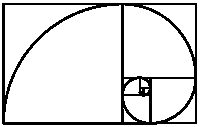Math in the Middle Institute Partnership
Date of this Version
7-2006
Abstract
In this action research study of my classroom of 5th grade mathematics, I investigated student engagement levels in the classroom, with a specific interest in how to raise the levels of engagement which students were demonstrating before the study began. I defined student engagement based on students’ posture, thinking, responsibility level, participation, and test readiness. Each day, students were given an engagement rubric where they would rate themselves on the previous five criteria. Students enjoyed the opportunity to grade themselves, and their engagement levels significantly improved over the course of the study. I discovered that giving students specific guidelines and criteria for my expectations, as well as modeling those expectations on the rubric by using pictures, and then having students grade themselves were all key factors to increasing the level of engagement that students demonstrated. As a result of this research, I plan to continue to use engagement rubrics not only in my mathematics class, but also in my classes for other subject areas.



Comments
A report on an action research project submitted in partial fulfillment of the requirements for Master of Arts in the Department of Teaching, Learning, and Teacher Education, University of Nebraska-Lincoln. Ruth Heaton, Advisor. July 2006.